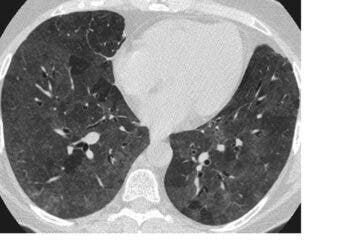Wood-burning stoves and fireplaces could pose a greater health risk than previously believed, according to new research. A comprehensive study involving 50,000 women discovered a significant correlation between frequent use of wood-burning stoves and an elevated risk of lung cancer. Specifically, women who regularly use these stoves have a 43% higher likelihood of developing lung cancer compared to those who do not.

Smoke signals
Burning wood indoors in stoves or fireplaces can pose significant health risks, primarily due to the emission of particulate matter and harmful gases like carbon monoxide, formaldehyde, and volatile organic compounds.
Burning wood releases tiny particles that can penetrate deep into the lungs and even enter the bloodstream. This can exacerbate respiratory conditions like asthma and can lead to other long-term health issues, including heart disease and lung cancer.
Wood smoke is a mixture of particulate matter, gases, and hundreds of different chemicals, some of which have been classified as hazardous air pollutants and carcinogens. In the US, it’s emitted mainly from wood stoves, fireplaces, and boilers. About two million US households currently use wood as their primary heating fuel. In the UK, 7.5% of all households use wood for heating, and in other countries, the percentage is even higher.
The International Agency for Research on Cancer (IARC) described indoor emissions from household combustion of wood as probably carcinogenic to humans, based on over a dozen studies. An analysis of studies in higher-income countries in Europe and North America found wood users have a 20% higher risk of lung cancer.
To assess the health risks of wood-burning, a team of US researchers used data collected as part of the Sister Study — an ongoing cohort of 50,000 women living in the US whose sisters have had breast cancer. Participants were asked whether there was a fireplace or wood-burning stove at their home and the overall frequency of its use.
Categories for using a wood-burning stove or fireplace were listed as not having one or using it zero days/year, 1–29 days/year of use, or 30–365 days/year of use. Participants were also asked to list the main source of heat, the main energy source for stovetop cooking and other fuel sources used in fireplaces and stoves.
“The Sister Study was designed to better understand genetic and environmental risk factors for breast cancer, but it is also equipped to evaluate other health outcomes in women. Lung cancer is the leading cause of cancer-related death among US women,” Suril Mehta, epidemiologist and one of the study authors, told The Guardian.
The risks of indoor wood burning
The researchers found higher rates of lung cancer with higher frequency of use of indoor wood-burning fireplaces and/or stoves in participants’ homes, including among non-smoking women. People who used their wood burner over 30 days a year had a 68% increased lung cancer risk compared with people who didn’t burn wood indoors.
In the study, gas propane and artificial logs used as fuel sources in fireplaces or stoves were also associated with a higher incidence of lung cancer. However, this was less significant than from wood burning. “Even occasional indoor wood burning from stoves and fireplaces can contribute to lung cancer,” Mehta told The Guardian.
Wood burning was positively associated with lung cancer incidence in all income groups covered in the study, and this positive association was consistently present among participants living in the Midwestern, Northeastern, and Western US.
Among the study population, wood was generally just a secondary fuel source with electricity and gas being mainly used. Compared to low- and middle-income countries, the US is much less reliant on wood as a primary fuel source for cooking and heating (just 1.7% of the population). However, its use varies by region and socioeconomic status. Those in rural poverty are the ones who rely the most on wood and therefore are more exposed to indoor pollution.
Each year, 3.2 million people die prematurely from illnesses attributable to household air pollution caused by the incomplete combustion of solid fuels, according to the World Health Organization. Of these, 6% are from lung cancer. The WHO calls for policy changes to rapidly increase the number of people who have access to clean fuels.
The study was published in the journal Environment International.






